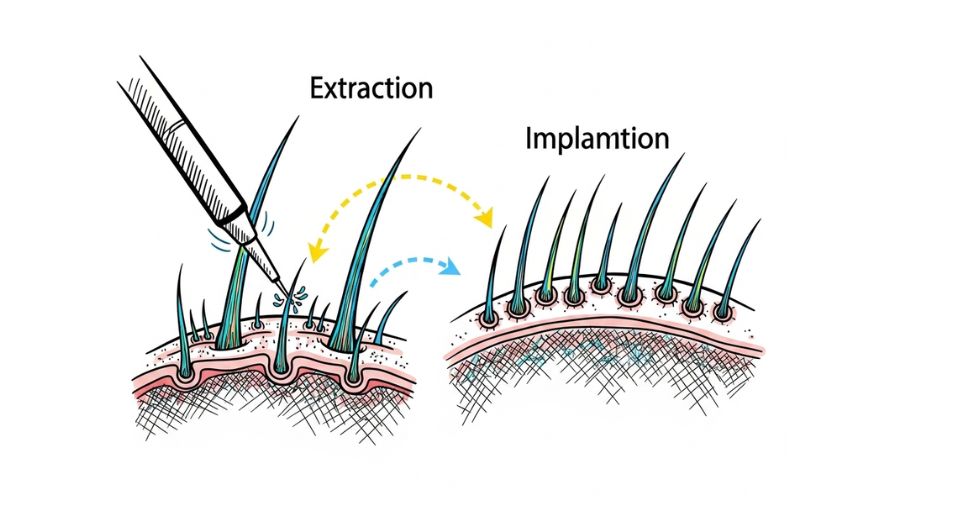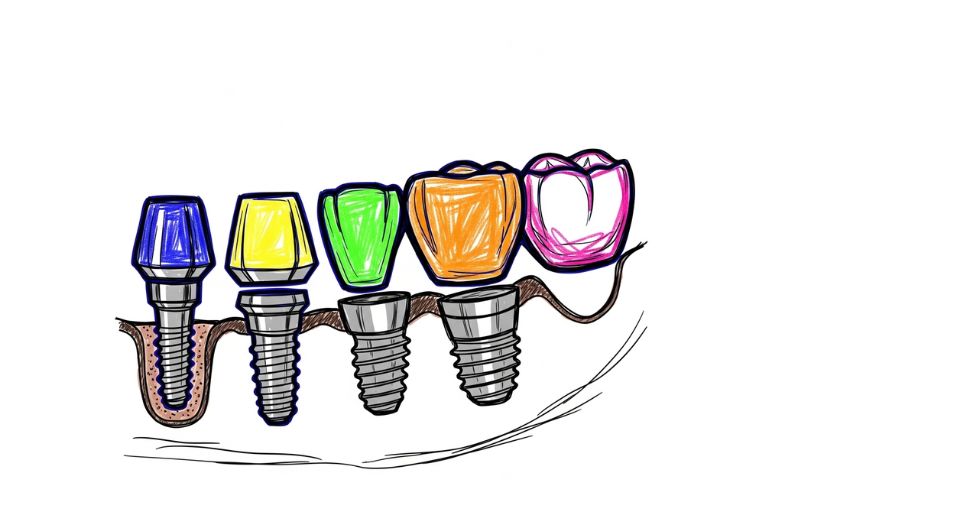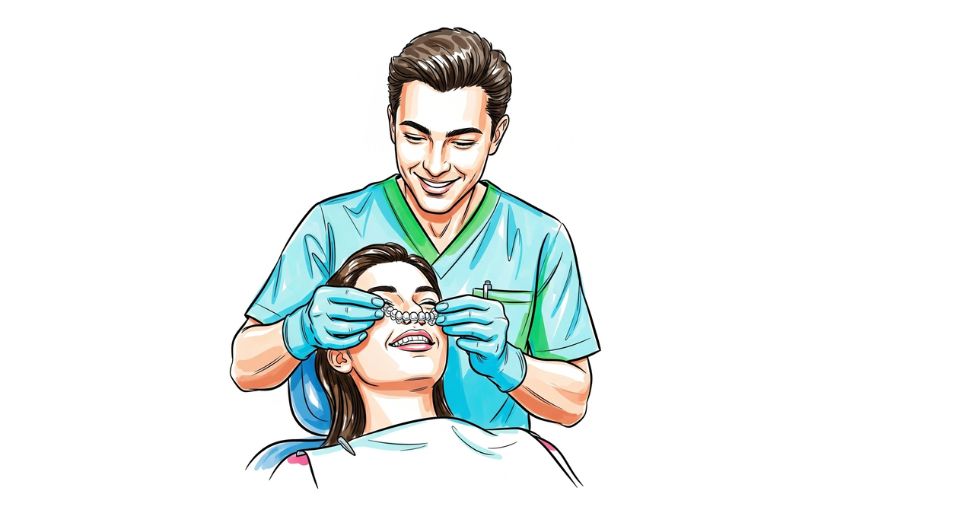MARKET OVERVIEW
The global hair transplant market will remain in the limelight as individuals across the world look for effective ways to restore hair. Within a few years, this segment will not just be a medical practice but an expanding aspect of personal grooming and aesthetics. As looks become increasingly important in personal and professional life, demand for superior transplantation practices will increase. This market will not remain stuck to traditional methods; rather, it will embrace innovation as a center point for determining results that come across as natural and sustainable.
Procedures in the future will no longer depend on traditional methods that tended to leave behind traces. Clinics will aim towards precision and minimally invasive procedures that provide comfort as well as long-term results. Technology will reshape the way surgeons go about transplantation, so that recovery times become shorter while rates of success become higher. Robot-assisted operations will eventually transition from being a luxury offering to an element of standard offerings in high-tech clinics, introducing uniformity and minimizing human mistakes. This will establish a competitive advantage for hospitals that embrace automation and cutting-edge imaging devices to map out procedures with unprecedented precision.
A second important change will be how patients receive these treatments. The global hair transplant market will adopt the theme of personalization. Each will have personalized plans based on their hair density, scalp health, and growth patterns in the future. Artificial intelligence would probably be involved in foreseeing the behavior of transplanted hair follicles in the long term, making strategies that optimize appearance and sustainability. Furthermore, non-surgical augmentations will exist alongside surgical treatments, providing hybrid options to individuals who want flexibility.
While the market will grow throughout traditional markets, it will also see fresh opportunities in developing nations. Those nations which previously viewed such procedures as a luxury will become major contributors to this expanding market. Greater awareness and availability will prompt more people to consider transplantation as a viable option instead of a lavish extravagance. As costs become more affordable, the business will appeal to younger groups, including those who value preventive measures before total loss.
In the future, the inclusion of regenerative medicine will add a whole new dimension to the global hair transplant market. Stem cell technology and bioengineered follicles will find their way into clinical practice, diminishing reliance on donor sites and holding promise for those with more advanced baldness. These will not simply redefine success prices, however additionally deliver the treatment adventure in the direction of sufferers. Sustainability may also be key as clinics embrace green practices and ethical resource sourcing to stay as much as international expectancies.
In the give up, the enterprise will now not provide remedy but rather turn out to be an experience that combines technology, generation, and aesthetics. As innovation continues to speed up and knowledge becomes more widespread, the global hair transplant market will establish itself as an advanced solution that crafts confidence for generations to come.
Global hair transplant market is estimated to reach $12,997.05 Million by 2032; growing at a CAGR of 6.2% from 2025 to 2032.

GROWTH FACTORS
The global hair transplant market is attracting a number of interest as increasing numbers of people search for solutions to enhance hair and increase confidence. A key contributor to this trend is the growing desire for cultured treatments among men and women. Appearance is a primary consideration in private and expert life nowadays, which has encouraged many to take a look at hair recuperation as a solution. With the role of social media and online platforms defining beauty, the desire to spend on treatments that make one look good is higher than ever. This shift in mindset will keep propelling more individuals towards professional hair transplants in the years to come.
Another key driver is the growing incidence of hair loss, no longer limited to a consequence of aging. High stress rates, unhealthy dietary habits, pollution, and modern ways of living are some of the causes for the rising incidence of hair thinning and baldness in various age groups. Self-esteem gets affected for most people, and as a result, hair restoration procedures have become a sought-after option. With increased awareness and newer solutions coming up, the market will experience continuous growth in patients opting for these treatments to prevent hair loss efficiently.
But the global hair transplant market has some constraints that cannot be ignored. The cost of treatment is still a significant issue, particularly in the developing world where affordability is a priority. Even as generation and results have become better, the price acts as a barrier for a large wide variety of human beings to not use these services. Furthermore, the hazard of put up-operative headaches like scarring or infection can deter feasible patients, impacting fees of adoption in general. Trust ought to be set up by using improving techniques and open conversation in order to conquer these problems.
Positively, there are new possibilities springing up which have the potential to reinvent the enterprise. One of the most exciting developments is the increased use of minimally invasive transplant techniques, which lessens restoration time and complements patient comfort. This innovation will appeal to extra people who choice herbal outcomes without extended downtime. Additionally, a boom in clinical tourism is establishing new doorways, mainly among international locations that offer great treatments at lower priced costs. With competitive costs and rather qualified surgeons, those places are speedy turning into preferred locations for go-border sufferers, because of this that this is a zone of excessive boom possibilities for the global hair transplant marketplace.
MARKET SEGMENTATION
By Technique
The global hair transplant market will see drastic change as people increasingly search for permanent solutions to hair loss. Hair loss isn't always simply a cosmetic issue but also impacts self-belief and vanity, with remedies consisting of transplants being extraordinarily famous. With increased awareness and improved accessibility, the demand for higher procedures will keep growing. Recent methods are drawing men and women interested in organic and permanent outcomes, and this will continue to influence the business for the next couple of years.
Among the popular methods, Follicular Unit Extraction (FUE) and Follicular Hair Transplantation (FUT) are the market leaders. FUE, with a value of around $6,150.04 million, is being hugely favored because of its less invasive procedure and quicker recovery process. This technique is a process where single hair follicles are removed and transplanted to areas of thinning, providing an appearance of natural hair without any scarring. FUT, however, is a conventional technique where a strip is removed from the scalp to acquire hair follicles. While FUT may be more budget-friendly, it creates a linear scar that makes it less desirable for individuals who wear short hairstyles.
Depending on how enormous hair loss is, the fee of treatments, and private expectancies, sufferers will make their decision among FUE and FUT. Both methods are being subtle with the generation, and automation used in them, making the system extra correct and quicker. Clinics across the globe are resorting to investing in generation and experienced employees for better results, which translates into increased pride among patients. This increasing faith in hair transplantation procedures will drive the market forward.
The rising popularity of medical tourism for hair transplant surgeries is also contributing to growth. Nations with high-quality services at reduced costs are emerging as leading destinations for foreign patients. This international demand, along with technological advancements, will make hair transplantation more affordable than ever. With innovations going on and with growing awareness, the global hair transplant market will continue to be among the most vibrant sectors in the cosmetic and medical sector, offering hope to millions in need of an enduring solution for baldness.
By Type
The global hair transplant market is framing a main portion of the cosmetic business, as an ever-developing wide variety of individuals seek effective measures to fight baldness and thinning of hair. Hair has constantly been intricately linked with self belief and vanity, and this has fueled the quest for modern healing techniques. Now, men and women alike are searching out permanent consequences rather than brief solutions together with wigs or hairpieces. With technology becoming increasingly to be had to aid precision and safety, hair transplant operations are gaining self belief and availability. The trend shows that the marketplace will preserve developing with growing awareness and affordability within the international.
Based on kind, the global hair transplant market is segmented into head hair transplant, eyebrow transplant, frontal hairline lowering, and others. Head hair transplant continues to be the maximum famous treatment, especially for the ones laid low with sample baldness. This system involves transferring hair follicles from donor sites to thinning or bald patches on the scalp. It is most desired because it supplies natural-looking consequences and lasting enhancement. The increasing number of men seeking this treatment in order to regain their hairline has greatly helped raise its popularity.
Eyebrow transplants, though on a smaller scale, are becoming more famous amongst people who have thin or asymmetrical eyebrows. Aesthetic tastes have evolved over the last few years, and fuller eyebrows are deemed suitable. This has led to better needs for treatments that ultimate. Likewise, lowering of the frontal hairline, that's instead called hairline development, is chosen by way of folks who preference to reduce the forehead size and attain a harmonious appearance. These methods aren't just for people with hair loss; they're additionally famous for cosmetic purposes, providing the market with a broader base.
Hair transplants of different kinds include beard and mustache transplants, which might be more and more famous with men who want to create a defined facial hair line. These techniques are for character style as well as cultural reasons where facial hair is connected to masculinity. With extra clinics embracing more moderen strategies including follicular unit extraction (FUE) and robot-assisted approaches, patients these days have more secure, quicker, and extra convenient experiences. This mixture of medical development and multiplied social popularity will keep to location the global hair transplant market on a steady incline in the years yet to come.
By Gender
The global hair transplant market will keep drawing interest as individuals seek effective treatments for baldness. Hair is very crucial to self belief and normal look, and while it starts off evolved thinning or falling off, it impacts vanity for both genders. Over time, hair restoration methods have developed from simple procedures to noticeably specialized treatments that deliver herbal-looking results. This advancement has popularized hair transplants and made them extra available, fueling expanded demand globally. The enterprise is also sustained by developing awareness degrees regarding the methods and rising numbers of clinics undertaking superior procedures.
Segmented via gender, the enterprise is similarly bifurcated into male and lady segments, with the percentage being dominated via guys. Male sample baldness, that is more general in men, is typically a result of genetics and hormonal versions. Hair thinning in men generally begins in advance as compared to ladies, and this tends to prompt them to seek long-time period solutions like transplants. Women enjoy hair loss from a broader cause base as compared to guys, such as hormonal imbalance, pressure, and infection. Although the woman populace of patients is smaller than that of fellows, this market is expanding incrementally with growing cognizance and reputation.
In guys, the target of treatment is usually hairline restoration or correction of significant bald patches, and tactics like Follicular Unit Extraction (FUE) and Follicular Unit Transplantation (FUT) are popular. These tactics are renowned for their accuracy and capability to produce natural-looking results. Men are also more prone to take hair transplants at an earlier stage in the pattern of baldness, which aids in having favorable results. Women tend to opt for minimally invasive procedures more and more, as they eliminate downtime and provide faster recovery, thus appealing to male patients.
Women tend to opt for treatment for diffuse thinning rather than absolute baldness. Their hair restoration treatments tend to have more gentle treatment because natural density must be preserved. Clinics currently offer customized solutions for female patients, with results appearing natural and meshing well with naturally occurring hair. Increasing focus on females' particular needs will continue to fuel market growth in women. As social acceptance of hair transplants for both genders improves and techniques become safer and more effective, the global hair transplant market will experience significant growth in the coming years.
By End User
The global hair transplant market has expanded considerably over the years, fueled by the growing awareness of cosmetic procedures and a mounting urge for enhanced physical appearance. Hair loss is a commonplace problem among each males and females, and this has given upward thrust to a excessive demand for superior hair restoration strategies. Thanks to the current technologies like follicular unit extraction (FUE) and follicular unit transplantation (FUT), patients nowadays can benefit from safer and greater green treatments. They are now not reserved for celebrities or the financially affluent; they're inside attain of the general public via aggressive prices and stepped forward financing possibilities.
When we section this marketplace via end consumer, it's miles specially categorized into Hospitals & Clinics and Hair Transplant Centers. Clinics and hospitals are giant gamers in providing those treatments due to the fact they're professional clinical centers with certified surgeons and equipment. They appeal to those purchasers who don't forget safety, cleanliness, and a holistic clinical method even as undergoing the remedy. Numerous hospitals also combine hair transplantation services within their cosmetic surgery or dermatology units, and patients are offered a full range of related procedures in one location, which is attractive to patients seeking one-stop care.
Alternatively, specialized hair transplant clinics are becoming very popular due to their dedicated expertise. These clinics focus on hair restoration, allowing them to provide surprisingly tailor-made solutions and patient-focused experience. They have a tendency to invest inside the most modern technology and brand new device in particular supposed for hair transplant procedures. Their sufferers commonly revel in talented surgeons who perform those operations on a every day basis, because of this better accuracy and natural-looking results. The customized consultations and aftercare furnished by using these centers make contributions to their growing desire among people looking for proper and centered alternatives.
Both segments, Hair Transplant Centers & Hospitals & Clinics, will preserve a dominant position in the market. Nevertheless, the contention between them will result in every one of them to innovate and enhance the general treatment revel in. With heightened awareness, the advance of era, and extra reputation of hair transplantation as a mainstream technique, the global hair transplant market ought to maintain to enjoy steady growth inside the years in advance. The emphasis on safety, cost, and natural effects will lead more people to opt for such approaches, and this market will stay thrilling and dynamic well into the destiny.
|
Forecast Period |
2025-2032 |
|
Market Size in 2025 |
$8,550.63 million |
|
Market Size by 2032 |
$12,997.05 Million |
|
Growth Rate from 2025 to 2032 |
6.2% |
|
Base Year |
2024 |
|
Regions Covered |
North America, Europe, Asia-Pacific Green, South America, Middle East & Africa |
REGIONAL ANALYSIS
The global hair transplant market is growing rapidly, fueled by growing awareness of personal hygiene and the emergence of improved treatment procedures. Hair loss impacts millions globally, and the need for efficient restoration products is generating new growth opportunities across regions. This industry has witnessed a significant turn towards advanced techniques that provide improved outcomes with less downtime, thus becoming increasingly attractive for both men and women. With ongoing development in the industry, its geographical spread is instrumental in determining its overall growth.
North America will continue to be a key driver in this market, buoyed by a high rate of acceptance of advanced beauty treatments and the availability of trained professionals. The U.S. is the leader in demand because of an increasing population that requires hair restoration and the presence of professional clinics with cutting-edge technology. Canada and Mexico also exhibit consistent growth as awareness and affordability increase. As customers in this market are ready to pay for aesthetic improvements, North America will continue to set robust standards for service excellence and innovation.
Europe will be close behind, with the likes of the UK, Germany, France, and Italy leading market growth. Demand in this marketplace is driven by a mix of increasing cosmetic awareness and access to established health systems that facilitate elective procedures. Competitive pricing and access to skilled surgeons further cement Europe's position in the international market. While Western Europe is the pace-setter in terms of adoption, other regions in Europe are increasingly catching up as knowledge propagates and economic conditions become favorable.
The Asia-Pacific market will be one of the fastest-growing markets, driven by a huge population base and wider acceptance of cosmetic procedures. The demand in countries like India, China, Japan, and South Korea will increase because of increasing disposable incomes as well as lifestyle trends. Another aspect that will drive growth in this region is medical tourism, where patients from other countries visit nations like India and South Korea for low-cost yet high-end procedures. As technology becomes more pervasive, the Asia-Pacific region will also be the key market that will define the future of hair transplantation.
Middle East & Africa and South America will also experience significant development, but at a slower rate than the North American and Asia-Pacific markets. In South America, Brazil and Argentina will spearhead the trend as beauty awareness and healthcare facilities enhance. Meanwhile, in the Middle East & Africa, nations such as the GCC countries, Egypt, and South Africa will register encouraging developments, boosted by expanding demand for cosmetic enhancements and rising investments in medical centers. Overall, the geographical spread of this marketplace guarantees a broad spectrum of growth, with each region contributing in its own manner to the worldwide demand for hair restoration treatments.

COMPETITIVE PLAYERS
The global hair transplant market has expanded dramatically over the last few years as individuals increasingly seek long-lasting solutions for baldness. Increased awareness regarding hair restoration, along with the psychological effect of going bald, has influenced both women and men to seek advanced treatments. The popularity of minimally invasive surgeries like follicular unit extraction (FUE) and follicular unit transplantation (FUT) is growing as these techniques provide naturally looking outcomes with minimal time required for recovery. With developments in technology, hair transplants are no more exclusive to the elite class; they are being made available to a broader category, bringing a positive boost in the sector.
Another significant factor propelling the market is the role of social media and evolving beauty standards. A well-groomed look is perceived to be synonymous with confidence, which encourages people more towards rebuilding their hairline. This has been further accelerated by celebrity endorsements and before-and-after testimonials posted online, thus leaving hair restoration treatments more acceptable socially. As the clinics increase services all over the world and provide competitive rates, patients are now crossing borders to seek cheap yet trusted solutions, hence medical tourism in the field of hair transplants.
Major players in the Hair Transplant market are Bernstein Medical, Bosley, Masterpiece Hospital, Dr Batra's, GetFUE Hair Transplantation Clinic, Hair Club, Hairline International Hair and Skin Clinic, Hermes Hair Clinic, HLC Hairline Clinic, Limmer Hair Transplant Center, MAXIM Hair Restoration, Folica Hair Care, Natural Transplants Hair Restoration Clinic, NeoGraft, NuHart Hair Clinics, Parsa Mohebi Hair Restoration, The Harley Street Clinic, Vinci Hair Clinic, Bernstein Medical, and Eugenix Hair Sciences. These businesses are constantly evolving their methods and spending money on new tools to provide improved outcomes. Some clinics also offer complementary procedures like PRP therapy to stimulate hair growth after a transplant, so the client has a full treatment cycle.
Its future will include increasingly complex technologies arriving, including robotic transplants and regenerative treatments for faster recovery and more dense hair growth. With the ongoing increase in disposable income, increased awareness, and personal grooming focus, the market will increasingly be appealed to by clients of various age groups and geographies. Furthermore, with decreasing stigma and increasing success rates, the global hair transplant market will continue to grow, enabling advanced hair restoration to become a reality for millions of people globally.
Hair Transplant Market Key Segments:
By Technique
- Follicular Unit Extraction (FUE)
- Follicular Hair Transplantation (FUT)
By Type
- Head Hair Transplant
- Eyebrow Transplant
- Frontal Hairline Lowering
- Other Types
By Gender
- Male
- Female
By End User
- Hospitals & Clinics
- Hair Transplant Centers
Key Global Hair Transplant Industry Players
- Bernstein Medical
- Bosley
- Masterpiece Hospital
- Dr Batra’s
- GetFUE Hair Transplantation Clinic
- Hair Club
- Hairline International Hair and Skin Clinic
- Hermes Hair Clinic
- HLC Hairline Clinic
- Limmer Hair Transplant Center
- MAXIM Hair Restoration
- Folica Hair Care
- Natural Transplants Hair Restoration Clinic
- NeoGraft
- NuHart Hair Clinics
- Parsa Mohebi Hair Restoration
- The Harley Street Clinic
- Vinci Hair Clinic
- Bernstein Medical
- Eugenix Hair Sciences
WHAT REPORT PROVIDES
- Full in-depth analysis of the parent Industry
- Important changes in market and its dynamics
- Segmentation details of the market
- Former, on-going, and projected market analysis in terms of volume and value
- Assessment of niche industry developments
- Market share analysis
- Key strategies of major players
- Emerging segments and regional growth potential








 US: +1 3023308252
US: +1 3023308252






